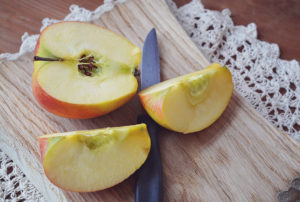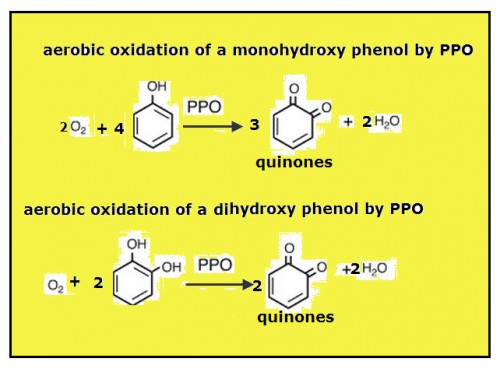Why do apple slices turn brown?
The peel of an apple prevents oxygen from coming in contact with the chemicals inside the apple.
Cutting an apple breaks the cells of the apple. Thus the broken cells on the cut surface of the apple are exposed to oxygen in air.
There are a series of chemical reactions that begin when the apple cells are broken.
1. Each apple cell has organelles called chloroplasts and vacuoles. When sliced, these organelles, chloroplasts and vacuoles, release polyphenol oxidase (PPO) enzyme and phenols .
2. In the presence of oxygen, the polyphenol oxidase enzymes rapidly oxidize the phenols forming quinones. This is an aerobic oxidation reaction, which means the phenols chemically combine with oxygen.
3. The quinones combine with each other forming a brown pigment called melanin. As the amount of melanin increases the darker will be the surface of the sliced apple.
A+ Projects in Biology
(Paid Link)
In A Nut Shell!
The browning of cut fruit is due to oxidation, but this process is speeded up by an enzyme called polyphenol oxidase. Polyphenol oxidase (PPO) is also called tyrosinase
Enzymes are generally sensitive to changes in pH. The low pH of the acid in citrus fruit affects the weak ionic bonds that holds the structure of the polyphenol oxidase enzymes together. The change in the structure of an enzyme is called “denaturing.” A denatured enzyme can no longer do its job, thus denatured polyphenol oxidase cannot speed up the oxidation of the phenols.
Coating the surface of sliced apples with lemon juice, which has a low pH, denatures the polyphenol oxidase, so the browning (oxidation) process that is slowed considerably.
The following video provides more information about stopping a cut apple from browning.


